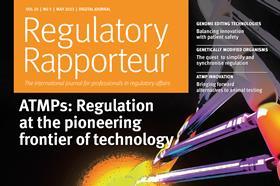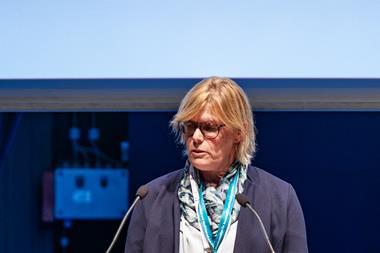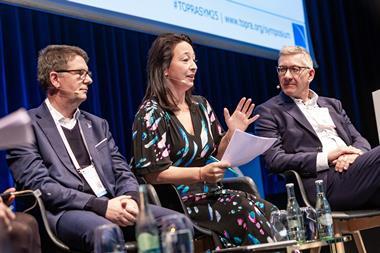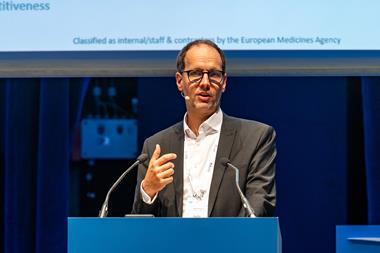
Who doesn’t like the sound of a cure? Can you imagine how different the world would be if we could eradicate life-threatening or seriously debilitating diseases? In recent years, we’ve seen the advent of a new era with technology advancing faster than ever, resulting in a multitude of advanced therapies in development with the promise to offer slowing of disease progression at a minimum, and at best a cure.

Regulatory Rapporteur
May 2023 | Volume 20 | No.5
However, progress is never without question and a significant degree of scrutiny. The big stories that are memorable – the case of Jesse Gelsinger, who was the first clinical trial participant to die after receiving a gene therapy; the China cases of gene editing via CRISPR in utero; and the mouse with a human ear on its back – tend to be remembered for negative reasons. Conversely, the positive ones, such as celebrating the ten-year anniversary in 2022 of Emily Whitehead’s treatment and long-term cancer-free survival as the first patient given a chimeric antigen receptor [CAR] T-cell therapy, do not tend to receive such wide publicity.
In the three decades since the first gene therapy trial was initiated in 1990, advances in medical science and the understanding of disease aetiology have exploded, bringing previously ‘undruggable’ diseases to the fore for developers. Progressing these products to the clinic and beyond can be challenging to achieve given they largely emerge from academic groups, or are developed by small- to medium-sized enterprises, and they require tailored programmes due to their complexity – a one-size-fits-all policy does not apply. This variability means that developers and regulators are working in an environment that is constantly in flux and which cannot be predicted but must be navigated based on sound scientific principles rather than via a checklist-based approach.

This situation is not new – technology has always developed faster than regulation – but the pace at which science is advancing is not being matched by progress of the current regulatory framework which, in stark contrast, is consultative, slow, and regional. However, progress it does – as best it can – as voiced by Dr Michaela Sharpe in this issue, who highlights moves made by regulators to recognise the individual, case-by-case approach needed for advanced therapies and the resulting shift in their expectations and requirements. Although a flexible approach had sometimes been applied historically, it had not always been visible publicly. As such, the development of and negotiation on suitable nonclinical development programmes were at risk of being perceived as a ‘dark art’.
Technology has always developed faster than regulation – but the pace at which science is advancing is not being matched by progress of the current regulatory framework which, in stark contrast, is consultative, slow, and regional.
Attempting to develop an advanced therapy in the absence of visible dedicated guidance is a continuing problem, especially where gene editing technologies are concerned. Developers of such products are currently operating at the cutting edge of medical science and in the absence of any definitive, final, product-specific legislation and guidance. Similarly, regulators are very much having to ‘think as they go’ and work in partnership with developers to agree a way forward – in real-time – and further guidance is considered essential to ensure that these products are able to be advanced to clinic and then to market, as summarised by Harriet Edwards.

In this vein, the public statements by the FDA’s Dr Peter Marks on the future utility of arrangements like Project Orbis – currently used in the oncology setting – for advanced therapies is very welcome, as global alignment and collaboration is urgently needed. This desire for closer working across regions to expedite development by facilitating a more harmonised global research environment is not unique to the US, with other agencies such as the UK’s MHRA recently announcing a significant investment to fast-track innovative new medicines and medical technologies for the benefit of UK patients.
On the continued theme of harmonisation – or lack thereof – the final focus article in this issue speaks to the considerations for assessment of potential risks to the environment from the use of genetically modified organisms (GMOs) in EU clinical trials. Such submissions remain outside the recently implemented Clinical Trials Regulation (Regulation EU No. 536/2014) and are still regulated at national Member State level and often by separate regulatory bodies to the clinical trial authorisation application itself. Although recent efforts to streamline and simplify the submissions have been helpful, further progress in this area would be very favourably received as these submissions still place a significant burden on clinical trial sponsors which continues through to global registration, as we hear from Dr Sabine Rühle and colleagues within the TOPRA Biotech and Clinical Trial SPIN group.
While advanced therapies are still in their relative infancy, with long-term efficacy and safety a significant possibility but still to be truly confirmed, there is an opportunity to champion for change on a global scale. Advanced therapies have the potential to be transformative for patients on a global scale and in an affordable manner, but this will only be achieved if we co-operate and collaborate on a global scale. For that to happen, steps need to be taken to bring key agencies to the table to agree ways of working and while allowing commercial flexibility for developers. We’ll be eagerly watching this space to see if anyone steps up.
May 2023 | Volume 20 | No.5
- Mind the gap: Innovation vs regulation of ATMPs
- G-E-T-ting there – how gene editing technologies could change more than genes
- Alternatives to animal testing in the development of ATMPs
- Evolution of GMO requirements for innovative investigational medicinal products upon transition to the EU CTR
- Ensuring promotional materials’ compliance in the EU
- Regulatory guidelines for nutraceuticals in India
































